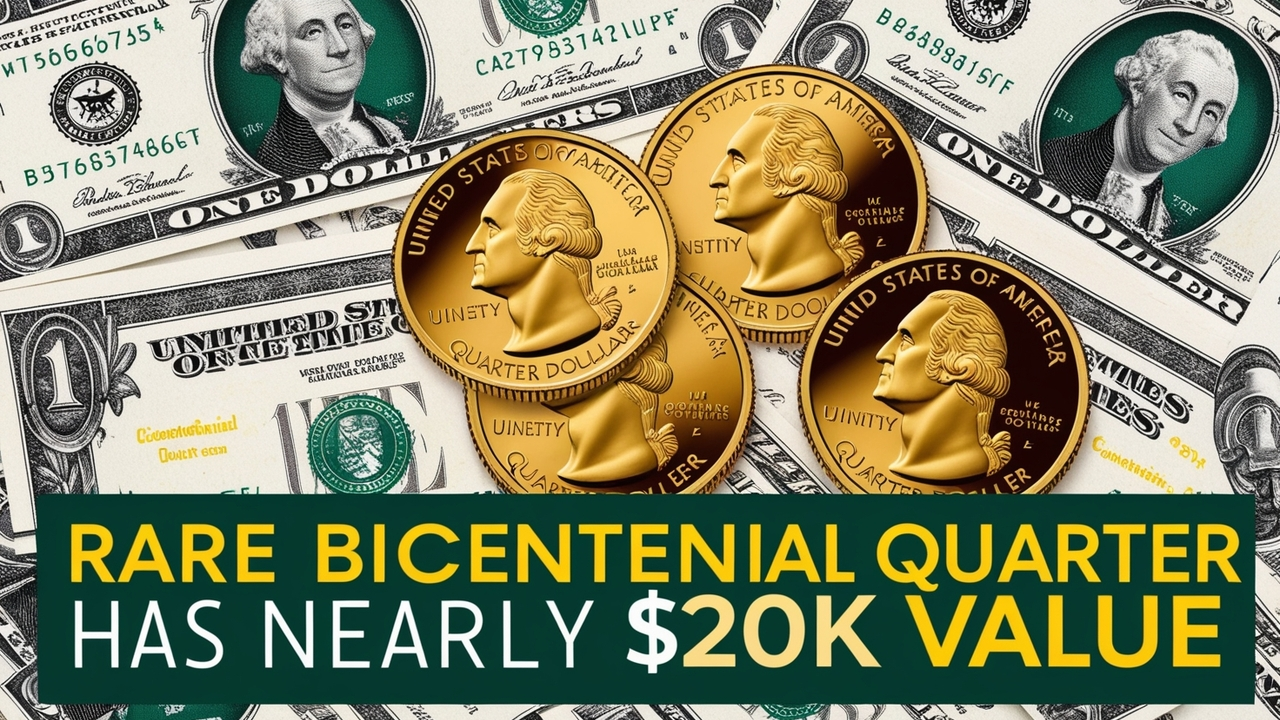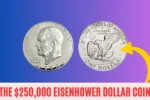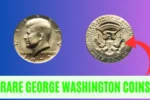This Rare Bicentennial Quarter Could Be Worth $20K: Bicentennial Quarters hold a special place in U.S. numismatic history. Minted between 1975 and 1976, these coins were issued to commemorate the 200th anniversary of American independence. Their distinctive reverse design, featuring a colonial drummer boy, marked the first major change to the quarter’s appearance in over 50 years. Nearly five decades later, some of these quarters are fetching jaw-dropping sums at auctions, with collectors paying thousands, and in some cases, tens of thousands, for these iconic pieces.
In this guide, we’ll dive into the fascinating history of Bicentennial Quarters, including what makes them unique, where they were minted, and which coins have sold for big money. If you’ve ever wondered if your spare change could hold a hidden treasure, keep reading.
What Makes Bicentennial Quarters So Special?
Bicentennial Quarters are part of a larger series of commemorative coins created during the U.S. Bicentennial celebration. Here’s what sets them apart from other coins:
- Dual Date: Instead of just one year, these coins are stamped with “1776–1976,” marking the 200th anniversary of the nation’s independence.
- Drummer Boy Design: The reverse features a colonial drummer boy alongside a victory torch, symbolizing freedom and perseverance.
Although millions of these coins were released into circulation, their value varies greatly depending on factors like composition, condition, and rarity. Silver and error coins are the most valuable.
5 High-Value Bicentennial Quarters That Sold for Thousands
Not all Bicentennial Quarters are created equal. Below are five examples of coins that have sold for eye-popping amounts at auction:
- 1976-S Bicentennial Silver Quarter
- Sold For: $19,200
- Details: This 40% silver coin achieved a high grade, making it exceptionally rare and valuable. Silver coins are much less common than their clad counterparts, and pristine examples are highly coveted by collectors.
- 1976-S Silver Proof Deep Cameo Bicentennial Quarter
- Sold For: $13,500
- Details: With its deep cameo finish, this coin has a stunning mirror-like appearance. The sharp contrast between the frosted design and reflective background makes it particularly desirable.
- 1976 Double Denomination Bicentennial Quarter Struck on a Dime
- Sold For: $9,200
- Details: Minting errors often attract collectors, and this coin is a rare find. Struck on a dime planchet, this error coin is highly valuable due to its unusual nature.
- 1976-D Clad DDO Bicentennial Quarter Business Strike
- Sold For: $8,400
- Details: This coin features a Double Die Obverse (DDO) error, creating a doubling effect on the text and details, which boosts its appeal to collectors.
- 1976-S Clad Proof Bicentennial Quarter
- Sold For: $6,038
- Details: Proof coins, which are made specifically for collectors, typically have sharper details and a polished finish. This particular example shows how rarity and condition can drive up value.
Minting Locations and Variants
Bicentennial Quarters were minted at three locations: Philadelphia, Denver, and San Francisco. Here’s a breakdown of their production numbers and key features:
- Philadelphia Mint: Produced 809,784,016 clad coins, the most common Bicentennial Quarters.
- Denver Mint: Produced 860,118,839 clad coins, which are also common but may include valuable mint errors.
- San Francisco Mint: Struck 11,000,000 uncirculated 40% silver coins and produced 7,059,099 proof clad coins, with silver versions being the rarest and most valuable.
What Determines the Value of a Bicentennial Quarter?
The value of Bicentennial Quarters can be influenced by several factors:
- Composition: Silver Bicentennial Quarters (40% silver) are much rarer than their clad counterparts, which are made from copper and nickel.
- Condition: Coins in mint state or proof condition, which show minimal wear, are the most valuable.
- Rarity: Coins with low mintage numbers, errors, or special features (like missing mint marks) tend to be more valuable.
- Mint Errors: Errors such as double strikes, off-center strikes, or coins struck on the wrong planchet are highly collectible.
Tips for Identifying Valuable Bicentennial Quarters
- Look for Errors: Pay attention to minting anomalies such as double strikes or misalignments.
- Check the Composition: Silver coins will have a distinct silver edge and weigh more than clad coins.
- Inspect the Date and Mint Mark: Proof coins from San Francisco with missing “S” mint marks are especially valuable.
- Use Magnification: A magnifying glass or loupe can help you spot subtle details like doubling or misalignments.
- Preserve the Coin: Avoid cleaning your coins, as it can decrease their value. Store them in protective cases to keep them in top condition.
Why Are Bicentennial Quarters a Collector’s Favorite?
Bicentennial Quarters are not just valuable—they are also steeped in history. Their design reflects a significant moment in American history, and collectors are drawn to their historical significance, aesthetic appeal, and the potential for finding rare treasures. As the U.S. approaches its 250th anniversary in 2026, interest in these coins is likely to increase, further boosting their value.
FAQs About Bicentennial Quarters
- Are all Bicentennial Quarters valuable?
No, most Bicentennial Quarters are worth only their face value of 25 cents. However, silver versions, mint errors, and coins in excellent condition can be worth thousands. - How can I identify a silver Bicentennial Quarter?
Silver quarters have a distinct silver edge and are slightly heavier than their clad counterparts. They often carry the “S” mint mark, indicating they were struck in San Francisco. - What is the most valuable Bicentennial Quarter?
The 1976-S Bicentennial Silver Quarter, which sold for $19,200, is one of the most valuable coins in the series. - Can I still find valuable Bicentennial Quarters in circulation?
While it’s rare, it’s possible to find valuable Bicentennial Quarters in circulation. Look for error coins or those in excellent condition. - Where can I sell a valuable Bicentennial Quarter?
You can sell your coin at numismatic auctions, coin shows, or through reputable dealers. It’s a good idea to have your coin professionally graded to maximize its value.
Final Thoughts
Bicentennial Quarters are more than just a piece of currency—they’re a tangible link to American history. While most of these coins are common, the rare variants can be worth a significant amount. Whether you’re a seasoned collector or just getting started, exploring the world of Bicentennial Quarters offers the excitement of discovery and the potential to own a piece of history.



